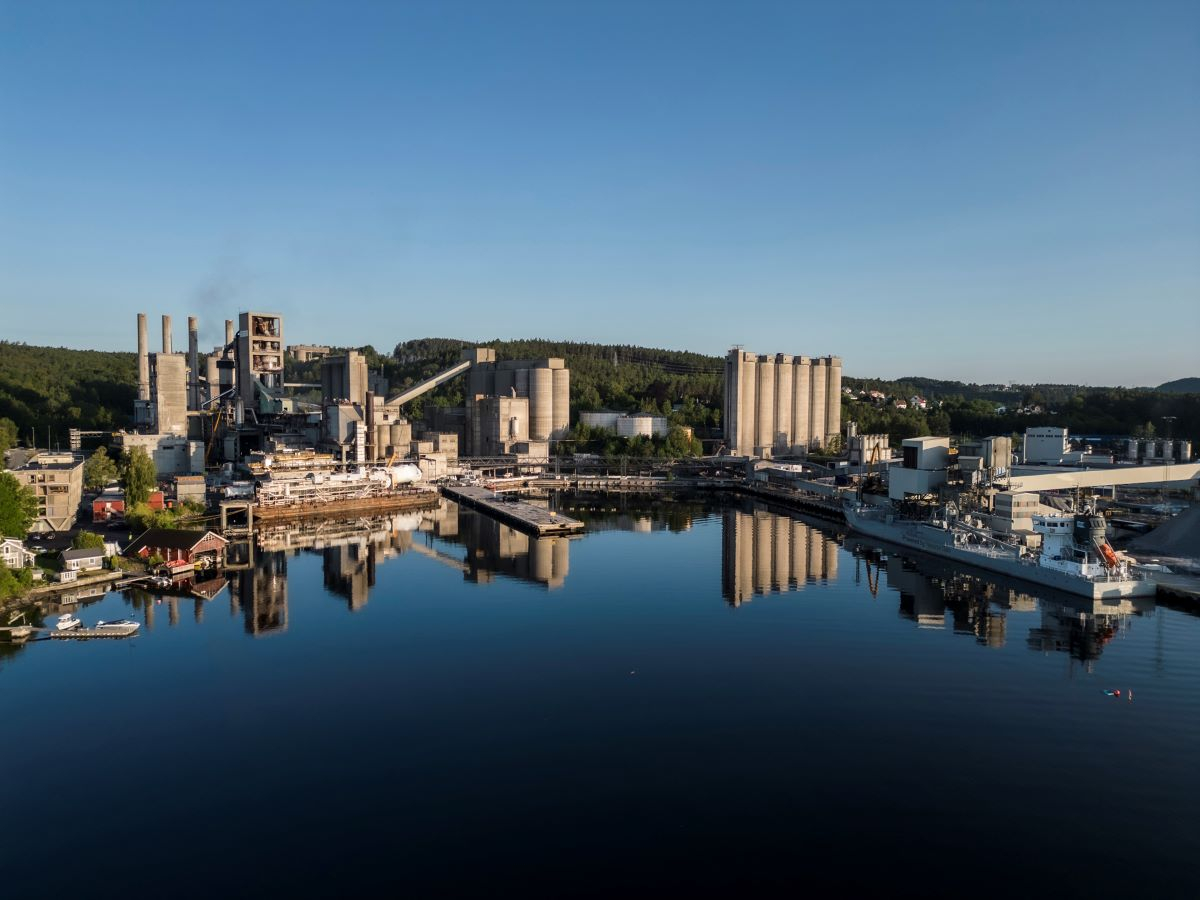This article is also available in Italian / Questo articolo è disponibile anche in italiano
According to the International Energy Agency, the intensity of carbon dioxide emissions in cement production has increased by almost 10% since 2015, mainly due to the increased clinker/cement ratio in China. The production of clinker, the basic component of Portland cement, involves high-temperature heating of limestone and clay and is thus one of the most energy-intensive and high-emission industrial processes. By 2030, total emissions from the sector must decrease by approximately 20%, also thanks to carbon capture, utilisation, and storage (CCUS).
Although many new plants have been planned, few zero-emission projects have been announced thus far. One of the standouts among these is evoZero, the first carbon-neutral cement created thanks to carbon capture developed by Heidelberg Materials, a group operating in over 50 countries with approximately 51,000 employees across almost 3,000 sites.
So what is the Group’s decarbonisation strategy? And, most importantly, what are the characteristics of evoZero, presented in Italy on 23 May 2024 at the Milan Triennial to an audience of over 200 designers, businesses, and representatives from real estate investment funds? To find out the answers to these questions, Renewable Matter interviewed Sergio Tortelli, evoZero Product Director at Heidelberg Materials.
What are the main strategies you deploy to reduce CO2 emissions in cement production, a notoriously hard-to-abate sector?
There are many strategies, but I would like to highlight the three main ones. First and foremost, we are working on using clinker substitutes that, on the one hand, enable sustainability in terms of emissions and material reuse, and on the other, maintain technical performance such as strength and durability, which are the cornerstone of cement materials generally. Secondly, we are increasing the use of alternative fuels and biomass, aiming to reach ratios of 45% and 20% respectively by 2030. This will help us reduce CO₂ emissions by 400 kg per tonne of cement material, a 47% reduction compared to 1990. Last but not least, we are implementing an ambitious plan of evolution toward carbon capture through innovative and advanced plant-engineering solutions.
Further to this, on 23 May 2024, you presented evoZero, “the world’s first carbon captured net zero cement.” How does it contribute to reducing emissions compared to conventional cement?
Our project’s most innovative feature is the industrial-scale application of carbon capture in a cement production plant, using a system based on amines, a chemical solvent that enables the absorption of CO2. This will make it possible to capture 400,000 tonnes of CO2 per year without compromising the material’s quality and resistance. Thus, we will obtain more sustainable cement with the same performance as ever. The plant is being built as part of the Brevik cement works in Norway and captured CO2 will be stored in former gas fields in the North Sea. This project is part of Norway’s Longship programme, launched in 2015 and still ongoing, with funding from the European Union and Member States to aid in the achievement of decarbonisation targets. For our group, it represents the result of approximately 20 years of planning and over 800,000 hours of design work. However, I want to add that collaboration with the supply chain is essential. We are working actively through training courses, scientific collaborations, and by organising technical and educational events to allow the designers to make conscious choices. Furthermore, we are working to spread this awareness through several lighthouse projects: this is the case, for example, of the Nobel Centre building in Stockholm, which has already chosen to use evoZero.
At Ecomondo you will present the new evoBuild brand, created to offer a range of products more and more geared toward low carbon content, while evoZero will be available on the market in the second half of 2025. Can you already give us a glimpse into the offer of this new product?
Customers will be able to choose between two solutions: “evoZero Carbon Captured Brevik” and “evoZero Carbon Captured”. The former, manufactured in Brevik, Norway, achieves a net-zero footprint over the life cycle of the material (cement or concrete) and is delivered by traditional methods. The latter can be manufactured in any cement works in Europe close to the client, harnessing the CO2 savings created in Brevik, and is characterised by a net-zero footprint on delivery. Outside Northern Europe, we will primarily offer “evoZero Carbon Captured” to reduce transport emissions and costs, allowing clients to use the same type of cement as usual without the need for additional equipment, such as dedicated silos. Furthermore, by purchasing evoZero, customers will benefit from the best sustainability performance, allowing them to reach recognised targets such as those of the Science Based Targets Initiative (SBTi), an authoritative, globally-recognised protocol to which we have signed up as a Group. Increasingly often, in construction, this is also turning out to be a useful approach for reducing financing costs, resulting in higher ratings than competitors and a positive externality in economic terms, such as access to projects with sustainable procurement standards. Consequently, an interesting picture is also emerging for low embodied carbon buildings, meaning those construction and infrastructure projects created with low carbon emission materials.
This content is produced thanks to the support of sponsors
Cover image: the Brevik plant



